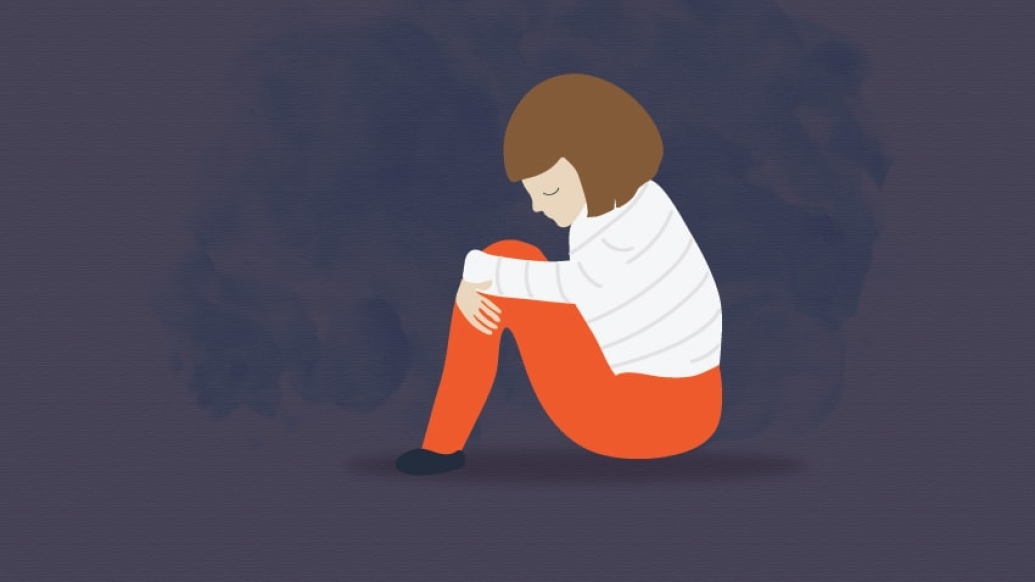A popular yet controversial Netflix show highlights a serious issue. A Michigan Medicine clinical social worker offers advice to help identify a person at risk.
1:00 PM
Author |

The new Netflix series "13 Reasons Why" follows a high school student who takes her life by suicide after a series of traumatic but common teenage events. The main character, a 17-year-old, releases a series of audio recordings that detail the circumstances leading up to her death.
MORE FROM MICHIGAN: Sign up for our weekly newsletter
The fictional series, based on a 2007 young adult novel, has been widely criticized and discussed in the media, among parents and mental health professionals, and by young people.
Some say the program glorifies suicide. Singer-actress Selena Gomez, the show's executive producer, who has struggled with depression herself, says the series — rated TV-MA — is meant to provoke realistic discussion.
Still, "it's hard to avoid sensationalizing suicide," says Meg Jennings, LMSW, social-work supervisor for Michigan Medicine's Regional Alliance for Healthy Schools. The initiative provides school-based health programs and clinical services, including individual and group therapy, at six locations in Washtenaw County and three in the Flint area.
The subject has touched countless families.
According to the American Psychiatric Association, depression may affect up to 1 in 4 teens by the end of their adolescence. Suicide is the second leading cause of death in 15- to 24-year-olds, second only to accidents.
Jennings, an expert on teen suicide, recently watched "13 Reasons Why." She explained some of the warning signs for suicide that parents and peers should know.
Common warning signs
Feelings of hopelessness can come out in conversations, so consider how individuals are talking about their life. If they are overwhelmed thinking about continuing to live, it is time to get help, Jennings says.
SEE ALSO: Panic Attack vs. Anxiety Attack: 6 Things to Know
Also suggestive is polarized thinking — in other words, the belief that things are only black and white, good or bad, all or nothing. Is a person speaking about suicide as his or her only choice?
Interest may be lost in activities once enjoyed. They might also suffer from insomnia as well as anxiety or panic.
The American Foundation for Suicide Prevention notes other warning signs. These may include reckless behavior, aggression, increased use of alcohol or drugs, visiting loved ones to say goodbye, or giving away prized possessions.
"When assessing risk, it is important to look out for how impulsive someone is. Are they behaving recklessly? For example, someone upset with their parents may open the car door and attempt to exit the vehicle while it is in motion," says Jennings.
A need for vigilance
Someone who is potentially suicidal will talk about death and having no reason to live. The individual may see himself or herself as a huge burden, making comments such as, "When I am gone, things are going to be better for everyone else."
The person may have unbearable pain and no hope for future. Often, those contemplating suicide feel that continuing to live is overwhelming or unbearable.
But that outlook also can shift.
"Sometimes, if someone's mood has improved it may be because they have decided to commit suicide," says Jennings. "It is a good idea to be cognizant of this if you have interacted with someone who was deeply hopeless just days before."
You should take note and immediate action if the person is talking about a specific plan to carry out his or her death, Jennings adds.
How to intervene
Do not ignore the signs. This is not normal teenage behavior, Jennings says. Connect your loved one with professional help by scheduling an assessment with a mental health provider.
Let your teen know that you care and want to get support. You cannot lecture a desire to commit suicide out of your child.
A need for professional guidance goes both ways. "Parents need to remember that they will likely need support themselves," Jennings says. "It is very stressful to have a suicidal teen. Consider scheduling yourself to see a mental health professional as soon as you are able."
Meanwhile, create a safe space for your teen to talk about issues. It is normal for teens to feel scared or even angry. It is important to validate your teen and communicate that you hear how hopeless he or she is feeling.
For friends of an at-risk adolescent, try to understand what your peer may be going through and be supportive. Try to persuade your friend to see a counselor. If you think the person is in imminent danger, tell an adult. Encourage them to call the National Suicide Prevention Lifeline at 1-800-273-TALK (8255) or use the Crisis Text Line by texting HOME to 741741.

Explore a variety of health care news & stories by visiting the Health Lab home page for more articles.

Department of Communication at Michigan Medicine
Want top health & research news weekly? Sign up for Health Lab’s newsletters today!





